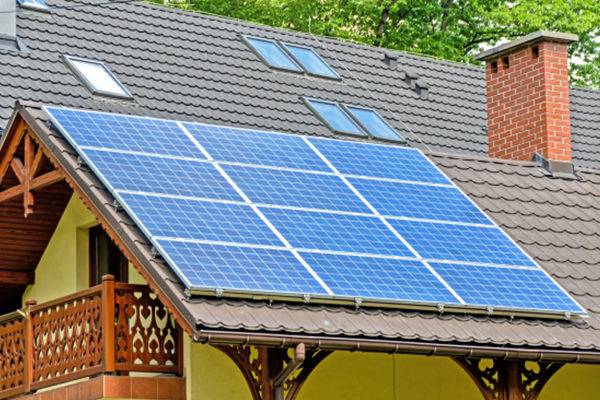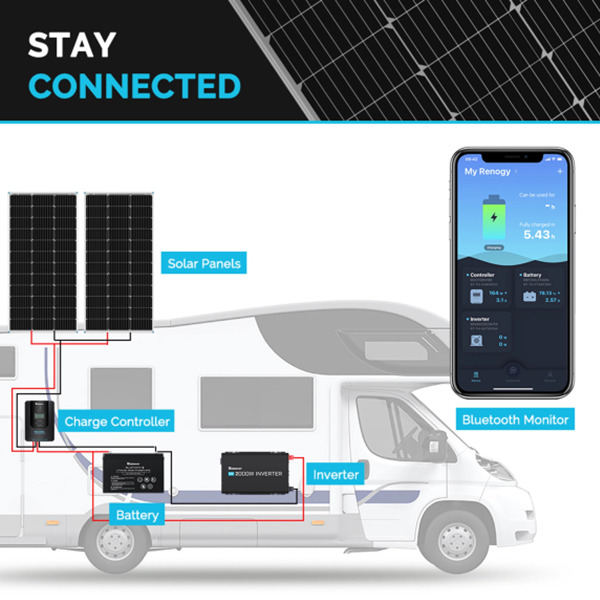Average Solar Panel Output Per Day: UK Guide
Average Solar Panel Output Per Day: UK Guide
In 2015, the international solar power market was valued at a little over £72.6 billion — now, it’s on pace to be worth over £354 billion by the end of 2022. Renewable energy in the UK is still exhibiting strong growth patterns that are on track to continue well into the future for both domestic and commercial use cases.
Whether you’re brand new to solar, performing research on purchasing a solar powered generator, or looking to upgrade your current system, one of the most common questions about solar power centers on energy production. How many kWh does a solar panel produce per day? What’s the average solar panel output per day for UK homes? What should the solar panel sizes uk be?
In this guide, we’ll address these frequently asked questions and dive deep into solar panel system sizing, how to monitor your system’s daily solar panel output, and related topics. Also, learning The Science Behind Solar Power Generation can help you understand better how does a solar panel produce electricity.
Table of contents:
- How Many kWh Do Solar Panels Produce in the UK?
- How Much Electricity Does a 1 kW Solar Panel System Produce?
- How Many kWh Per Day Does a 5 kW System Produce?
- How to Monitor Your Daily Solar Panel Output
- Factors That Can Affect a Solar Panel’s Energy Production
- Size Your Own Solar Panel System: How Many Solar Panels Do You Need?
How Many kWh Do Solar Panels Produce in the UK?

According to a study from Statista, the UK generated more than 12,000 gigawatt hours (GWh) in 2021. In 2004 that number came in at just four GWh, with one GWh being equivalent to 1,000,000 kWh. More and more homeowners are turning to solar power in the UK, which raises an important question — exactly how much energy can solar panels in the UK actually produce?
The answer depends on numerous factors such as the system’s size, how many panels, the specific type of panel (e.g., monocrystalline solar panels versus polycrystalline panels), weather patterns, and the installation location. Below we provide some more context on how much kWh solar panels produce in the UK (on average).
About the PV system size, you read find more information in How to Properly Size a PV System.
Average solar panel output per day
The average solar panel output per day is dependent on the system’s capacity, sun hours, and other factors. An average two kW system that receives five hours of sunlight per day will be able to generate around 10,000 watt hours (10 kWh a day). The average capacity for a residential solar system ranges from one kW up to four kW — the higher the kW capacity, the more energy it can produce each day.
Here is the formula: solar panel watts x sun hours = Wh
How much energy does a solar panel produce per day?

Image from Renogy 200 watt 12 volt monocrystalline solar panel
Each solar panel system is different — different panels, different location, different size — which means that calculating the “average” output per day depends on many factors. However, the majority of private-use solar panels are able to generate anywhere between 250 to 400 watts per every hour of sunlight.
If your system has two panels, with each panel capable of generating 300 watts per hour, and your installation receives four hours of sunlight each day, the daily output would equal 2,400 watt hours (Wh) or 2.4 kWh per day.
Average solar panel output per month
How many kWh do solar panels produce on a monthly basis? The average monthly solar panel output can range from anywhere between 100 up to 400 kWh per month. However, the average output per month depends entirely on the type of solar panels used, the size of the system, how many actual hours of sunlight the installation receives, and related factors. One of the most common solar system sizes in the UK is four kW.
Because the UK receives an average of four sun hours per day, the average solar panel output per month can be calculated by taking a system’s daily average output and multiplying it by 30. In the above section’s example of 2.4 kWh per day (i.e., two solar panels generating 300 watts per hour, multiplied by four hours of sunlight), a system like that (with small solar panels) would have an output of 72 kWh per month (or 72,000 watt hours).
Average solar panel output per square metre
In the UK, one of the more common solar system sizes is a four kW system with 16 separate panels. It’s common for a single panel to have an input rate of 1,000 watts. However, the majority of modern solar panels have an efficiency percentage ranging from 15 to 20 percent. So, for a 16 panel system, with each panel measuring one square metre, each panel can generally produce about 150 to 200 watts per metre. In the UK, a region with an average of four hours of sunlight per day, each square metre of solar panels can generate 0.6kWh to 0.8kWh. And this equals to 2.4 to 3.2kWh energy output for a four kW system per day.
How Much Electricity Does a 1 kW Solar Panel System Produce?
A 1 kW solar panel system is considered on the smaller size, with these systems typically being used for DIY projects, RVs, boats, vehicles, or off grid solar panels for small structures. The most commonly stated amount of electricity that these systems can produce is 850 kW per annum, or 2.3 kWh per day. These systems usually consist of only two panels.
How Many kWh Per Day Does a 5 kW System Produce?
In an average five kW residential system, anywhere from 15 to 25 kWh per day is the norm (depending on the weather, solar panel specifications, system efficiency, etc.). This adds up to 5,400 to 9,000 kWh per year, which is typically enough power for the average three-person UK household that has normal power usage habits.
How to Monitor Your Daily Solar Panel Output?
Solar power maintenance doesn’t just refer to ensuring your system’s hardware is running cleanly and smoothly; it also refers to knowing exactly how much power your solar panel is producing on a daily basis. Twenty years ago it was much harder to achieve this — but fast forward to modern times and it has become incredibly easy to monitor daily solar panel output via solutions such as BT-1 and BT-2 Bluetooth modules combined with the DC Home App.

Tech-based solutions like these will allow homeowners and business owners more insight into their solar power system’s efficiency, usage, and overall output. By connecting to certain models of Renogy hardware, the BT-2 provides remote monitoring of your system’s performance and allows you to modify system parameters via the integrated DC Home App. Why is it important to monitor your system’s energy output? Because there are numerous factors that can impact daily, monthly, and annual output. More detailed information on the BT-2 module is available here.
For more relevant information, you can read What is Solar Panel IoT Monitoring & How Does It Work.
Factors That Can Affect a Solar Panel’s Energy Production
The average efficiency range for a solar panel ranges between 15 and 20 percent. There are numerous factors that can impact efficiency and affect a system’s overall energy production output. For example, using a monocrystalline-based solar panel can produce a 4 to 7 percent increase in overall efficiency (compared to a polycrystalline panel). Here are some of the other most important factors:
● Specific type of solar cell technology (e.g., IBC cells or PERC cells)
● Weather patterns and where the system has been installed and/or positioned on a structure (or the ground)
● The general climate of the geographic region where the system is installed
● Whether or not there are shade-related issues in the installation’s location (e.g., excessive tree cover, other buildings or structures, etc.)
● How the solar panels have been oriented and tilted for maximum solar exposure
Size Your Own Solar Panel System: How Many Solar Panels Do You Need?
There are five important factors to consider when determining how many solar panels your installation, property, vehicle, or structure will require, and what the solar panel sizes uk is:
1. Your purchasing and installation budget
2. The total estimated amount of energy that you use daily
3. How many sunlight hours per day your region, city, or location receives
4. How much space your roof has for the installation (or if you’re using ground mounted solar panels, how much space your property has)
5. Whether or not you’re using a solar powered generator system with battery storage, and what the system’s energy storage capabilities are
An easy way to determine some of these calculations is by using a solar power calculator UK. The calculators on our site will give you an estimate of your desired system’s minimum size, its recommended size, and recommended battery sizes (e.g., 12V lithium ion battery versus a 24V battery).
Once you’re able to provide details for each of the above listed factors, you will have a much better idea of the type of system you need, how many panels you should use, and how much energy your system will need to be able to produce.
Now it’s your time to select a solar panel system on the market. Renogy will be the best place to go, with a wide variety of key solar products including rigid and portable solar panels, pure sine wave inverters, MPPT charge controllers, 12V solar batteries, and more.
Related articles:
Advantages and Disadvantages of Solar Energy in the UK
Building An Off Grid Solar System In The U.K.
How Much Are Solar Panels? | 2022 Guide UK







